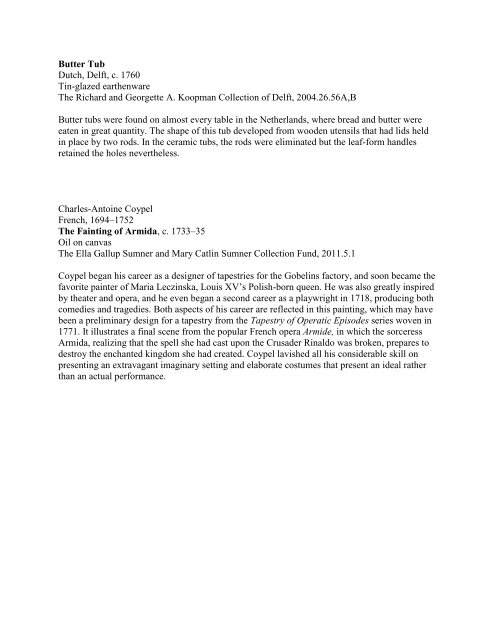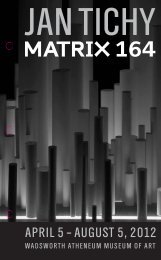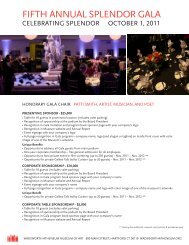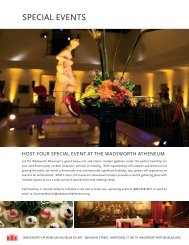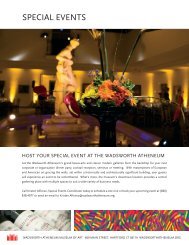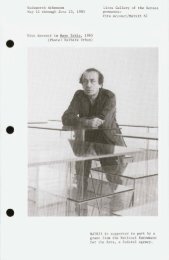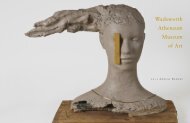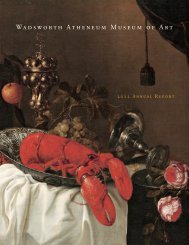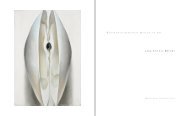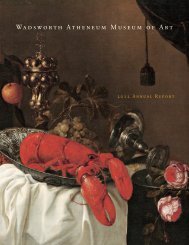The Age of Pleasure and Enlightenment European art of the ...
The Age of Pleasure and Enlightenment European art of the ...
The Age of Pleasure and Enlightenment European art of the ...
Create successful ePaper yourself
Turn your PDF publications into a flip-book with our unique Google optimized e-Paper software.
Butter TubDutch, Delft, c. 1760Tin-glazed e<strong>art</strong>henware<strong>The</strong> Richard <strong>and</strong> Georgette A. Koopman Collection <strong>of</strong> Delft, 2004.26.56A,BButter tubs were found on almost every table in <strong>the</strong> Ne<strong>the</strong>rl<strong>and</strong>s, where bread <strong>and</strong> butter wereeaten in great quantity. <strong>The</strong> shape <strong>of</strong> this tub developed from wooden utensils that had lids heldin place by two rods. In <strong>the</strong> ceramic tubs, <strong>the</strong> rods were eliminated but <strong>the</strong> leaf-form h<strong>and</strong>lesretained <strong>the</strong> holes never<strong>the</strong>less.Charles-Antoine CoypelFrench, 1694–1752<strong>The</strong> Fainting <strong>of</strong> Armida, c. 1733–35Oil on canvas<strong>The</strong> Ella Gallup Sumner <strong>and</strong> Mary Catlin Sumner Collection Fund, 2011.5.1Coypel began his career as a designer <strong>of</strong> tapestries for <strong>the</strong> Gobelins factory, <strong>and</strong> soon became <strong>the</strong>favorite painter <strong>of</strong> Maria Leczinska, Louis XV’s Polish-born queen. He was also greatly inspiredby <strong>the</strong>ater <strong>and</strong> opera, <strong>and</strong> he even began a second career as a playwright in 1718, producing bothcomedies <strong>and</strong> tragedies. Both aspects <strong>of</strong> his career are reflected in this painting, which may havebeen a preliminary design for a tapestry from <strong>the</strong> Tapestry <strong>of</strong> Operatic Episodes series woven in1771. It illustrates a final scene from <strong>the</strong> popular French opera Armide, in which <strong>the</strong> sorceressArmida, realizing that <strong>the</strong> spell she had cast upon <strong>the</strong> Crusader Rinaldo was broken, prepares todestroy <strong>the</strong> enchanted kingdom she had created. Coypel lavished all his considerable skill onpresenting an extravagant imaginary setting <strong>and</strong> elaborate costumes that present an ideal ra<strong>the</strong>rthan an actual performance.


